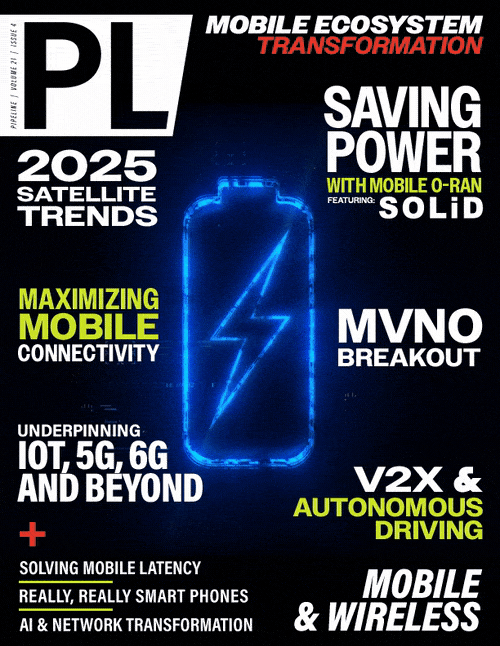Solving Pervasive Mobility’s Latency Puzzle by Fusing
Telecommunications Legacy with Edge Innovation
By: Marc Cram

The telecommunications and data center industries are at an inflection point. Users expect uninterrupted access to digital services wherever they are, at all times. This requirement of pervasive mobility comes as more and more devices are coming online and connectivity becomes increasingly integrated into everyday life. This confluence leads to a fundamental question: how can networks be reimagined to seamlessly connect mobile fronthaul, edge, and core?
The new age of ubiquitous computing demands an unconventional, imaginative approach. It’s not enough to build bigger data centers or deploy 400, 800, or even 1.6 Tb/s networks. Data processing must be embedded closer to end users in a way that successfully bridges connected devices on home Wi-Fi networks, cellular systems, and public/private connections with the facilities where data is stored and processed.
The challenge, as always, is latency. Delivering on the promise of pervasive mobility will require solutions that address connectivity, power distribution, operational intelligence, and environmental adaptability at every layer of the network. Success depends on rearchitecting networks in a way that fuses cutting-edge innovation with existing infrastructure.
Constant Contact
Today, 98 percent of Americans own a mobile phone of some kind, and 9 in 10 own a smartphone, up from 35 percent in 2011. That doesn’t account for other connected devices, such as smart home appliances, smart speakers, smartwatches and wearables, or connected vehicles.
Although users have become accustomed to being able to, for example, transition from home Wi-Fi to LTE while streaming content, there’s another element at play here putting pressure on networks to deliver ubiquitous connectivity: products and applications that are designed with the expectation of pervasive mobility.
Peridot, an augmented reality game, makes an excellent use case. Users are encouraged to visit real world locations, hopping from network to network to play with their AI-generated pets. The platform communicates with all the different networks in a geographic region and can direct users to specific locations to interact with the game. This dynamic and evolving virtual world is not possible without pervasive mobility. The same concept can be applied to a growing number of devices and applications. For example, an electric vehicle which can identify nearby charging stations based on its geographic location.
This demands networks that can handle ever-changing environments without any perceptible delay. Latency is a critical factor in ensuring these seamless experiences. Data processing must be embedded closer to end users in a way that successfully bridges the connected devices on home Wi-Fi networks, cellular systems, and public/private connections with the facilities where data is stored and processed.
Additionally, the telecommunications and data center industries must reimagine how all layers — mobile fronthaul, edge, and core — interact to create a cohesive ecosystem. This requires addressing challenges across connectivity, power, and operational intelligence.
New Era of Data Center Connectivity
Tackling the latency issue starts at the data center level. The acceptable level of optical losses grows smaller as data rates grow larger. High-capacity optics, such as Very Small Form Factor
(VSFF) connectors, allow data center operators to increase the density of fiber optic connections within a limited space, maximizing performance and efficiency. By leveraging the channelization
and distribution capabilities of VSFF optics, operators can reduce dependencies on conventional spine-leaf architectures,




















